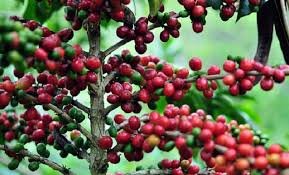
Coffee plantations that have been developed since 1908 are thriving in Bener Meriah district, Central Aceh and a small part of Gayo Lues region. The three areas located at an altitude of 1200 m above sea level have the largest coffee plantations in Indonesia, which is about 81,000 hectares. Each of the 42,000 hectares is located in Bener Meriah Regency, the rest (39,000 hectares) in Aceh Tengah Regency. Gayo people work as coffee farmers with dominance of Arabica varieties. The production of arabica coffee produced from Gayo Land is the largest in Asia.
The distribution of coffee plants to Indonesia brought a Dutchman in the 17th century who get arabica mocca seed from Arabia to Batavia (Jakarta). Arabica coffee was first grown and developed in the Jatinegara area, Jakarta, using the private land of Kesawung which is now better known as Pondok Kopi. The next spread of the coffee plant is also up to the Gayo Highlands area, Central Aceh district. From the Dutch colonial period to the present Gayo coffee in particular has become the main livelihood of Gayo society has even become the only center of export quality coffee crops in the region of Central Aceh. In addition, archaeological evidence of the remains of Dutch colonial drying coffee factory in Wih Porak Village, Silih Nara Sub-district, Central Aceh has provided clarity that coffee in the past has once become an important commodity of the economy.
The presence of Dutch rule in Gayo Land in 1904 was immediately followed by the presence of other immigrants. At that time the region of Central Aceh was used as onder afdeeling Nordkus Atjeh with Sigli as its capital. On the other hand, the Dutch presence has also given a new livelihood by opening up plantation land, one of which is Gayo coffee plantation (at an altitude of 1,000 - 1,700 m above sea level).
Before coffee was present in the Gayo Highlands, tea and pepper plants had been introduced. According to Dutch agricultural expert JH Heyl in his book Pepercultuur in Atjeh explains the origin of pepper plants brought from Mandagaskar (East Africa) in the VII or VIII century to the land of Aceh (Zainuddin, 1961: 264). Unfortunately, both plants received less serious attention from the colonial government. In the end the Netherlands then introduced and opened the first 100 hectares of coffee plantations in 1918 in the Belang Gele area, which now belongs to Bebesen Sub-district, Central Aceh. In addition to the opening of plantation land, in 1920 there was a new village of Gayo community around the Dutch coffee plantation, and in 1925-1930 they opened a new history by opening the coffee plantations of the people. The opening is based on the knowledge gained by farmers because it is adjacent to the Dutch plantation. By the end of 1930 four kampongs had been established around the Dutch gardens in Belang Gele, the Belang Gele, Atu Gajah, Paya Sawi, and Pantan Peseng (Melalatoa, 2003
One of the archaeological evidence relating to this coffee commodity is the findings of the remains of a coffee drying plant near the Baitul Makmur Mosque, Wih Porak Village, Silih Nara, Central Aceh, Nanggroe Aceh Darussalam Province . It is astronomically located at 040 36640 'LU and 0960 45.660' BT (47 N 0251594 UTM 0510018). The former coffee drying plant occupies a land measuring 110 m x 60 m, some of which have now become the land of Integrated Pesantren Darul Uini. On the land there is the rest of the building in the form of the rest of the foundation, the remaining wall of the building, the former water mill, and several ponds where the coffee drying process. [6]
The waterwheel is marked with 3 pieces of wall thickness of 15 cm, height about 2 m and on the top surface are found each of 2 pieces of iron bolts are estimated as a place to ride the windmill. Near the former waterwheel are found two ponds processing coffee, one of which measures about 2.65 m long, 2.33 m wide and 1.25 m high. In the south there is a water channel that leads to a pond in the south. In addition, there is a former wall of coffee grain dryer in the south after the wall of the water channel. In the former wall of the pond there are still drain holes in the north. After the independence of the factory was abandoned, then around the 1960s until 1979 the factory was once managed by PNP I, then its owners move to PT Ala Silo and the last land is now owned by the Regional Government Plantation Office Kab. Aceh Tengah.
Currently in Aceh there are two types of coffee that is cultivated is Arabica coffee and Robusta coffee Two types of Gayo Coffee is very famous Gayo coffee (Arabica) and coffee Ulee Kareeng (Robusta). For Arabica coffee is generally grown in the highlands of "Tanah Gayo", Southeast Aceh, and Gayo Lues, while in Pidie (mainly Tangse and Geumpang) and West Aceh dominantly developed by the community here is Robusta coffee. Arabica coffee is rather large and dark green, the leaves are oval, the height of the tree reaches seven meters. However, in coffee plantations, the height of this tree is maintained to range from 2-3 meters. The goal is easy to harvest. Arabica Coffee Tree started producing its first fruit in three years. Usually the branch grows from the stem with a length of about 15 cm. The leaves are above the color of the sun because the sun is darker. Each rod accommodates 10-15 small flower arrangements that will be the fruit of coffee.

From this process then came the coffee fruit called cherry, oval-shaped, two pieces side by side. Gayo Coffee is one of the leading commodities originating from the Gayo Highlands. Coffee plantations that have been developed since 1908 is thriving in Bener Meriah and Central Aceh. Both areas are located at an altitude of 1200 m above sea level has the largest coffee plantations in Indonesia with an area of about 81,000 ha. 42,000 ha each are located in Bener Meriah Regency and 39,000 ha in Aceh Tengah Regency. Gayo is the name of the original tribe who inhabit this area. The majority of Gayo people work as Coffee Farmers.
Arabica varieties dominate the coffee species developed by Gayo Coffee farmers. Arabica Coffee Production generated from Gayo Land is the largest in Asia Gayo Coffee is one of the typical coffee Nusantara Aceh origin which quite much favored by various circles in the world. Gayo coffee has a very distinctive aroma and flavor. Most of the coffee is there, the bitterness is still left on our tongue, but not so in Gayo coffee. The bitterness is hardly felt in this coffee. The genuine taste of Gayo coffee is found in the aroma of fragrant coffee and savory taste is hardly bitter. There is even a opinion that the taste of Gayo coffee exceeds the taste of Blue Mountain coffee originating from Jamaica. Gayo coffee is produced from a smallholder plantation in the Gayo highlands of Central Aceh.
In the area coffee is grown in an organic way without chemicals so this coffee is also known as green coffee (environmentally friendly). Gayo coffee is touted as the best organic coffee in the world.